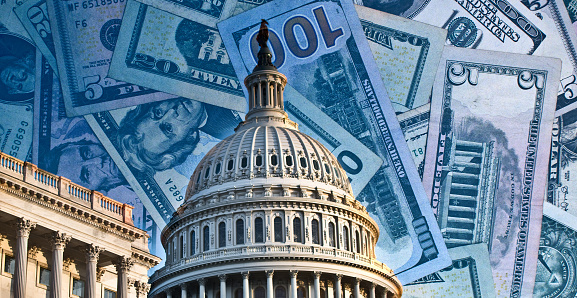How Can I Use the Psychology of Persuasion in My Calls-to-Action to Increase Conversions?
Leverage the psychology of persuasion in your calls-to-action (CTAs) to boost conversions by understanding and tapping into the key principles of influence. Start by creating a sense of urgency and scarcity to prompt immediate action. Use social proof by showcasing testimonials or user-generated content to build trust and credibility. Highlight the benefits and value of your offer clearly to appeal to the user's self-interest. Additionally, make your CTAs visually compelling and easy to follow. A well-structured CTA, grounded in psychological principles, can significantly enhance your conversion rates.

In the digital landscape, creating effective calls-to-action (CTAs) is crucial for converting visitors into customers. Understanding the psychology of persuasion can significantly enhance the effectiveness of your CTAs, leading to increased conversions. This guide delves into the principles of persuasion and how to implement them in your calls-to-action to encourage more users to take the desired action.
Understanding the Basics of Persuasion
Persuasion is the art of convincing others to adopt a certain belief or take specific actions. It involves understanding human behavior and motivations. By leveraging psychological principles, marketers can craft CTAs that resonate with their audience, prompting them to engage with your content or products.
The Principles of Persuasion
Several key principles can be applied to enhance your CTAs. Understanding these principles allows you to craft messages that appeal to your audience's emotions and rationality.
Reciprocity: The Power of Giving Before Asking
Reciprocity is a powerful psychological principle where individuals feel compelled to return a favor. When applying this principle to your CTAs, consider offering something of value before making your request. This could be in the form of a free trial, downloadable resource, or valuable information. By providing value upfront, you create a sense of obligation in your audience, making them more likely to respond positively to your CTA.
Scarcity: Creating Urgency with Limited Availability
Scarcity is a persuasive technique that plays on the fear of missing out (FOMO). When people perceive that something is limited in availability, they are more likely to act quickly to secure it. Use language in your CTAs that emphasizes scarcity, such as "limited time offer" or "only a few left in stock." This sense of urgency encourages users to take immediate action rather than procrastinating.
Authority: Leveraging Credibility and Trust
People are more likely to be influenced by individuals or organizations they perceive as credible or authoritative. Incorporating authority into your CTAs can enhance their effectiveness. This can be achieved by featuring testimonials, endorsements, or certifications from reputable sources. When your audience sees that others trust you, they are more likely to respond positively to your CTA.
Consistency: Building Commitment Over Time
The principle of consistency suggests that people are more likely to follow through with commitments they have already made. To leverage this principle, start with small requests before moving to larger ones. For example, if you can get users to sign up for a newsletter, they may be more likely to make a purchase later. Your CTAs should encourage small commitments that build toward the ultimate goal, making it easier for users to agree to larger requests.
Liking: Creating Positive Connections
People are more inclined to respond positively to those they like. Building a connection with your audience is essential for effective CTAs. Use friendly and relatable language in your messaging, and consider personalizing your CTAs to make them feel more relevant to individual users. When people feel a connection with your brand, they are more likely to respond favorably to your calls-to-action.
Social Proof: Harnessing the Power of Others
Social proof is the psychological phenomenon where people look to others for guidance on how to behave. Incorporating elements of social proof into your CTAs can significantly increase their effectiveness. Showcase customer reviews, user testimonials, or case studies that highlight the positive experiences of others. When potential customers see that others have benefited from your product or service, they are more likely to take action themselves.
Crafting Effective Calls-to-Action
Now that you understand the psychological principles of persuasion, it’s time to apply them in crafting effective CTAs. Here are strategies to help you create compelling calls-to-action that drive conversions.
Be Clear and Direct
Clarity is essential when creating CTAs. Use clear and direct language that tells your audience exactly what you want them to do. Instead of using vague phrases like "click here," opt for specific actions such as "download your free guide" or "get started with your free trial." The more straightforward your CTA, the more likely users will respond positively.
Utilize Action-Oriented Language
Action-oriented language creates a sense of urgency and motivates users to take action. Use strong verbs that convey urgency and enthusiasm. Phrases like "Join now," "Start today," or "Claim your offer" encourage users to act immediately rather than delaying their decision.
Design for Visibility and Impact
The design of your CTA can significantly influence its effectiveness. Ensure that your CTAs are visually distinct and easy to find. Use contrasting colors that stand out against the background, and consider the placement of your CTAs within your content. CTAs that are strategically placed within the flow of your content are more likely to capture attention and drive conversions.
Test and Optimize Your CTAs
To maximize the effectiveness of your CTAs, it’s essential to test different variations. Conduct A/B testing to compare different wording, designs, and placements of your CTAs. Monitor the results and analyze which variations drive the most conversions. Continuous testing and optimization allow you to refine your approach and enhance your overall conversion rates.
Personalize Your CTAs
Personalization is key to connecting with your audience. Tailor your CTAs based on user behavior, demographics, or preferences. Use dynamic content that changes according to the individual’s past interactions with your brand. When CTAs feel relevant to the user, they are more likely to engage.
Create a Sense of Community
Encouraging users to feel like they are part of a community can enhance the effectiveness of your CTAs. Use language that fosters inclusivity and belonging. Phrases like "Join our community of satisfied customers" or "Become part of the movement" create a sense of connection and encourage users to take action.
Measure Your Results
To assess the effectiveness of your CTAs, track key metrics such as click-through rates, conversion rates, and user engagement. Use analytics tools to gather insights into how users interact with your CTAs. Understanding what works and what doesn’t will help you refine your approach and continue improving your calls-to-action.
Utilizing the psychology of persuasion in your calls-to-action can significantly enhance your conversion rates. By understanding key principles such as reciprocity, scarcity, authority, consistency, liking, and social proof, you can craft compelling CTAs that resonate with your audience. Implementing clear, action-oriented language, optimizing design, and personalizing content will further improve the effectiveness of your CTAs. Continuously testing and measuring your results will ensure you are on the right path to increasing conversions and driving business success.
FAQs About Using the Psychology of Persuasion in Calls-to-Action
How can reciprocity be applied to CTAs?
Reciprocity can be applied by offering something valuable to your audience, such as free resources or exclusive content, before asking for a specific action. This builds a sense of obligation to reciprocate.
What is the impact of scarcity on user behavior?
Scarcity creates urgency and prompts users to act quickly to avoid missing out. Incorporating phrases that highlight limited time offers or limited quantities can encourage faster decision-making.
How can I incorporate social proof into my CTAs?
You can incorporate social proof by showcasing testimonials, customer reviews, or success stories that highlight positive experiences with your product or service. This reassures potential customers of the value of your offering.
What role does personalization play in CTAs?
Personalization helps make CTAs feel more relevant to individual users. By tailoring messages based on user behavior, preferences, or demographics, you create a stronger connection that encourages action.
How can I measure the effectiveness of my CTAs?
You can measure the effectiveness of your CTAs by tracking key metrics such as click-through rates, conversion rates, and user engagement. Analyzing these metrics will help you understand what works and what doesn’t.
What should I consider when designing my CTAs?
When designing your CTAs, consider factors such as color contrast, placement, and overall visibility. Ensure that your CTAs stand out and are easy to locate within your content.
Is it essential to test different variations of CTAs?
Yes, A/B testing different variations of CTAs is essential for identifying which elements drive the most conversions. Continuous testing allows you to refine your approach based on actual user behavior.
How can I create a sense of community in my CTAs?
You can create a sense of community by using inclusive language and encouraging users to join a group or movement. Phrases that emphasize belonging and connection can foster engagement.
What are some action-oriented phrases I can use in my CTAs?
Some action-oriented phrases include "Get started now," "Join today," "Download your free guide," and "Claim your discount." These phrases create a sense of urgency and encourage immediate action.
How does authority influence user decisions?
Authority influences user decisions by building trust and credibility. Featuring endorsements, testimonials, or expert opinions can enhance your CTAs and make users more likely to respond positively.
Get in Touch
Website – https://www.webinfomatrix.com
Mobile - +91 9212306116
Whatsapp – https://call.whatsapp.com/voice/9rqVJyqSNMhpdFkKPZGYKj
Skype – shalabh.mishra
Telegram – shalabhmishra
Email - info@webinfomatrix.com
What's Your Reaction?
















